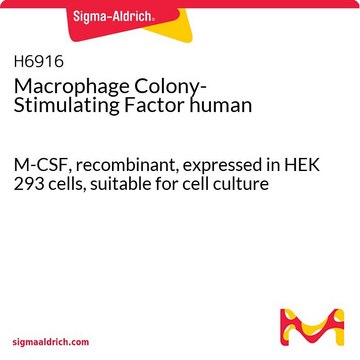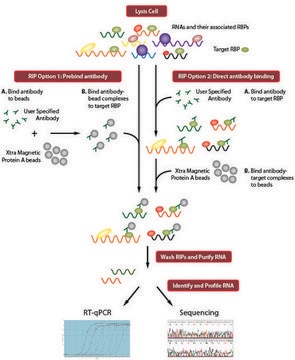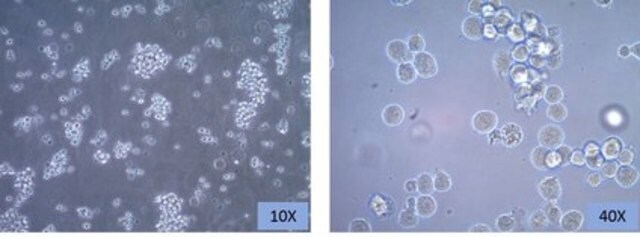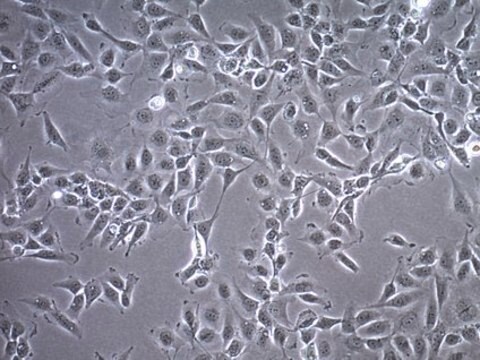SCC165
BLaER1 Human B-cell Precursor Leukemia Cell Line
Human
Synonim(y):
B cell Leukemia C/EBPalphaER clone 1
About This Item
Polecane produkty
product name
BLaER1 Human B-cell Precursor Leukemia Cell Line, BLaER1 human B-cell precursor leukemia cell line may be transdifferentiated and used to model human monocytes.
pochodzenie biologiczne
human
metody
cell culture | mammalian: suitable
Warunki transportu
ambient
Opis ogólny
The BLaER1 cell line is a tamoxifen-inducible derivative of the RCH-ACV B-cell leukemia cell line genetically modified using a retrovirus vector to express C/EBPa fused with the estrogen receptor hormone binding domain (ER) and GFP . A study demonstrated that BLaER1 cells could efficiently convert into cells exhibiting increased adherent, phagocytic and quiescent properties with a transcriptome resembling normal macrophages . Cells retained their phenotype even when C/EBPa was inactivated, a characteristic of genuine cell reprogramming. C/EBPa induction also impaired cell tumorigenicity after transplantation into immunodeficient mice. BLaER1 is thus a model for highly efficient transdifferentiation of B-cell-derived human cancer cells.
Source:
BLaER1 cells are a single subclone isolated from C/EBPaER-GFP-transfected RCH-ACV acute lymphoblastic leukemia (ALL) cells sorted for GFP expression. The parental cell line was obtained from the bone marrow of a female with chromosome translocation 1;19 and trisomy 8 .
Biosafety Level 2:
BLaER1 cells contain squirrel monkey retrovirus (SMRV) and should be handled under biosafety level 2.
Opis linii komórkowej
Zastosowanie
Jakość
- Each vial contains ≥1×10 viable cells.
- Cells are tested negative for infectious diseases by a Human Essential CLEAR panel by Charles River Animal Diagnostic Services.
- Cells are verified to be of human origin and negative for inter-species contamination from mouse, rat, chinese hamster, Golden Syrian hamster, and non-human primate (NHP) as assessed by a Contamination Clear panel by Charles River Animal Diagnostic Services
- Cells are negative for mycoplasma contamination.
- Cells tested positive for squirrel monkey retrovirus (SMRV).
Przechowywanie i stabilność
Hasło ostrzegawcze
Warning
Zwroty wskazujące rodzaj zagrożenia
Zwroty wskazujące środki ostrożności
Klasyfikacja zagrożeń
Skin Sens. 1
Kod klasy składowania
12 - Non Combustible Liquids
Klasa zagrożenia wodnego (WGK)
WGK 1
Temperatura zapłonu (°F)
Not applicable
Temperatura zapłonu (°C)
Not applicable
Certyfikaty analizy (CoA)
Poszukaj Certyfikaty analizy (CoA), wpisując numer partii/serii produktów. Numery serii i partii można znaleźć na etykiecie produktu po słowach „seria” lub „partia”.
Masz już ten produkt?
Dokumenty związane z niedawno zakupionymi produktami zostały zamieszczone w Bibliotece dokumentów.
Nasz zespół naukowców ma doświadczenie we wszystkich obszarach badań, w tym w naukach przyrodniczych, materiałoznawstwie, syntezie chemicznej, chromatografii, analityce i wielu innych dziedzinach.
Skontaktuj się z zespołem ds. pomocy technicznej









